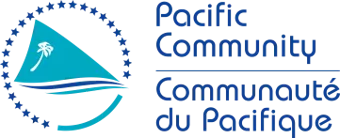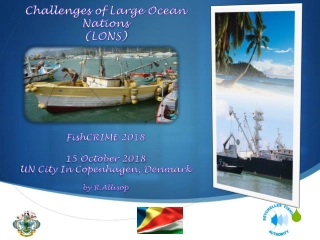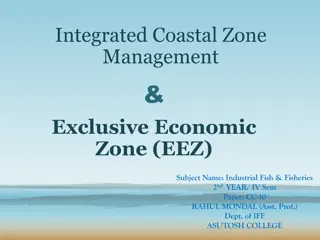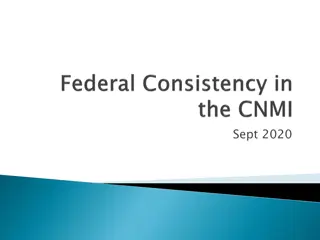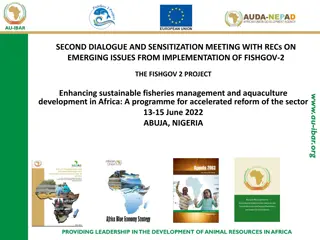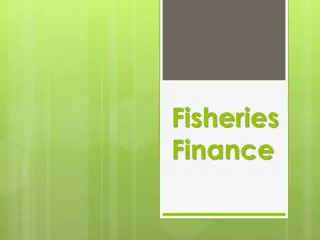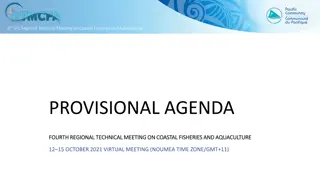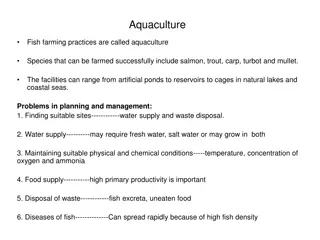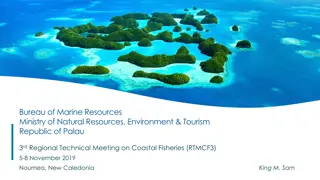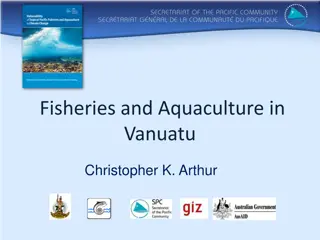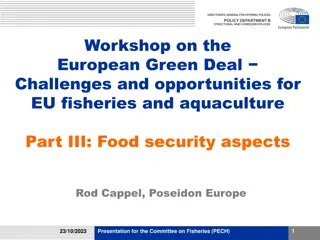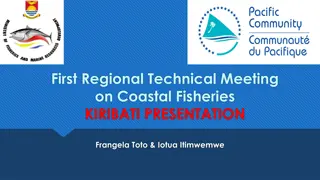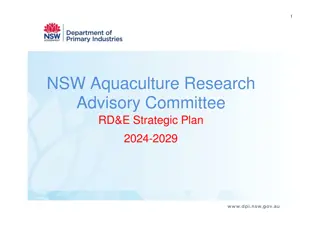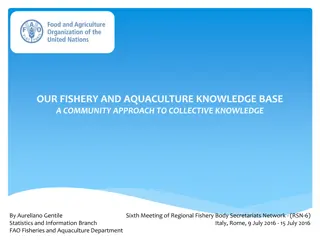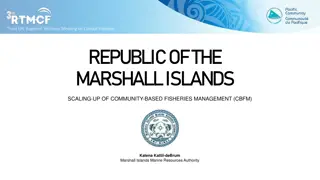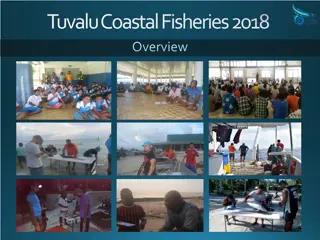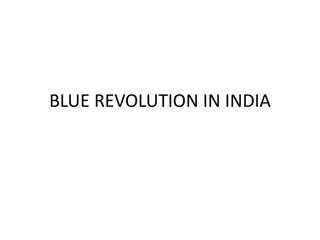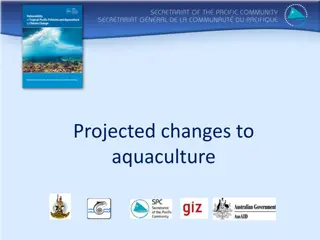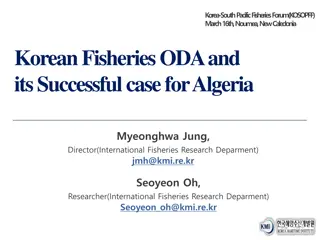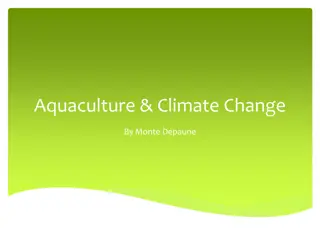Coastal Fisheries and Aquaculture Priorities in Solomon Islands
The Third SPC Regional Technical Meeting highlighted key technical priorities for coastal fisheries and aquaculture in the Solomon Islands, focusing on community-based resource management, science-based stock assessment, aquaculture biosecurity, and conducive environment for development. Recent actions since the previous meeting include the development of upscaling strategy, recruitment of compliance officers, women empowerment in fisheries, stock assessment completion, and increased budget support for community-based activities.
Download Presentation

Please find below an Image/Link to download the presentation.
The content on the website is provided AS IS for your information and personal use only. It may not be sold, licensed, or shared on other websites without obtaining consent from the author. Download presentation by click this link. If you encounter any issues during the download, it is possible that the publisher has removed the file from their server.
E N D
Presentation Transcript
Third SPC Regional Technical Meeting on Coastal Fisheries SOLOMON ISLANDS COASTAL FISHERIES AND AQUACULTURE TECHNICAL ISSUES AND PRIORITIES
Coastal Fisheries Technical Priorities 1. CBRM-Up-Scaling: Communities in the Solomon Islands are highly dependent on natural resources for nutrition, livelihoods and culture. 90% of inshore coastal areas are under customary marine tenure and provide a rich source of protein for coastal communities. CBRM recognizes the rights of communities as land and resource owners and -managers of their natural resources and supports communities to use traditional knowledge and scientific tools to sustainably manage the resources they depend on for food, nutrition, livelihoods, economic development, culture and for future generations. Therefore, initiative on information dissemination, strengthening Provincial & Community Governance, Updating Provincial Ordinances and By- Laws, Monitoring, Compliance and Enforcement at Provincial & Community Level, Adequate Resources allocation, and improving collaboration and Networking is ongoing. 2. Science-Stock Assessment: The Government is embarking on National Stock Assessment for key commercial and threaten species. This includes, trochus, Sea Cucumber, Coral, Clams, and Crocodile for the next three years. The Government have recognised the need for good and readily available science data for decision making and meeting international requirement (eg Meeting Cites Non-Detriment Finding) thus prioritising stock assessment of key commercial and threaten species. Such data is also important to securing proper management of this species and the problematic Sea Cucumber fishery is a clear example in this case. The Government is working towards setting survey standards for specific species, proper data storage and analyses, allocating adequate Resources, strengthen Monitoring, Compliance and Enforcement and implementing Market Surveys.
Aquaculture Technical Priorities 1. Biosecurity: Aquaculture is an emerging sector in SI and been recognized and reprioritized for development within the Last decade by the Government. Biosecurity is a key technical priority with current priority species for development were to be imported into the Country. Also, Our Biosecurity Legislation & Policy framework do not cover aquatic fish product been imported and Exported under Coastal Fisheries and Aquaculture Sectors. Establishing import & Export standards, Aquatic animal health management framework and Food safety of aquatic products are key areas the Government is Working on. 2. Conducive Environment for Development: Working towards providing a conducive Environment for the sustainable development and management of the Aquaculture sector in Solomon Islands is a key Priority. An this will require a multisectoral approach into acquiring appropriate farming and hatchery technology, infrastructure, science, data, Human Resources, marketing and Financing, Capacity building and effective awareness and information dissemination .
Actions taken since RTMCF2 (Nov 2018) 1. Development of Upscaling strategy and is currently at a draft stage. 2. Recruitment of 3 inshore (coastal) compliance officers. 3. First Women leaders Forum on Fisheries Sector held in September, 2019 and focuses on empowering women at all level of governance. 4. Completed Stock Assessment for clams, trochus & corals and with management plans to be drafted. 5. An increase in budget support for CBRM activities for 2019 and 2020.
Coastal Fisheries Issues or Challenges 1. A major challenge in the spread of CBRM to cover all communities in the country is the geographic spread and costly modes of implementations being the two key contributing factors. Supporting communities on CBRM means providing technical knowledge and skills, materials and resources to enable communities to design, implement, and monitor effective resource management activities in specific areas as well as gain recognition for managed areas through legally recognized pathways. The Government and its key stakeholders are working together to ensure current CBRM efforts can be scaled up to ensure critical ecosystems are healthy and productive and the use of marine and coastal resources is sustainable for the social and economic wellbeing of coastal communities and their food security. This includes work towards improving Provincial & Community Governance, Updating Provincial Ordinances and By-Laws, Monitoring, Compliance and Enforcement at Provincial & Community Level, Having Adequate Resources allocated, Implementing Extensive Awareness initiatives and improving collaboration and Networking across all levels. 2. Monitoring, Compliance & Enforcement of key commercial and threaten species at the Provinces and communities is a challenge. All exporters and Compliance officers are currently based and stationed in Honiara and with few in Noro. This is a huge challenge with limited compliance out in the provinces and communities, leaving the Government focusing only on Port Entry and Exporter on site inspections.
Aquaculture Issues or Challenges 1. Private Sector Engagement: Currently the Government is shouldering all initiative towards development of the sector in the Country. It is the strategy of the Government to leverage certain commodity to a commercial status and with anticipation of Private sector engagement by investment in this commodity will provide the opportunity for the Government to focus on other prioritized commodities for development. 2. Limitation on Biosecurity Legal & strategic Framework: Current Biosecurity regulatory frameworks have limitations in terms of addressing the technical components that directly deal with aquatic organisms and products. Therefore, any importation or export brings associated risks. The Government is working towards improving our aquatic biosecurity status within the next couple of years. 3. Limited Infrastructure & Resources: As an emerging sector, limited infrastructure and Resources remains a key issues. For instance, availability of local produced feed, distribution centers and hatchery, competition from other high value species (eg BDM), luck of awareness by local communities and provincial administrators on the Aquaculture Program.
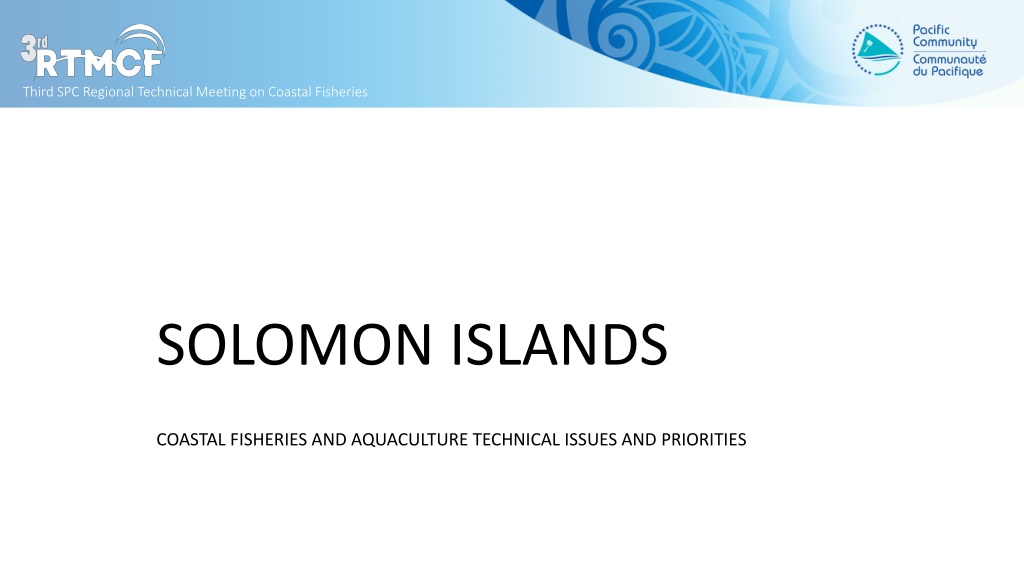
 undefined
undefined


 undefined
undefined